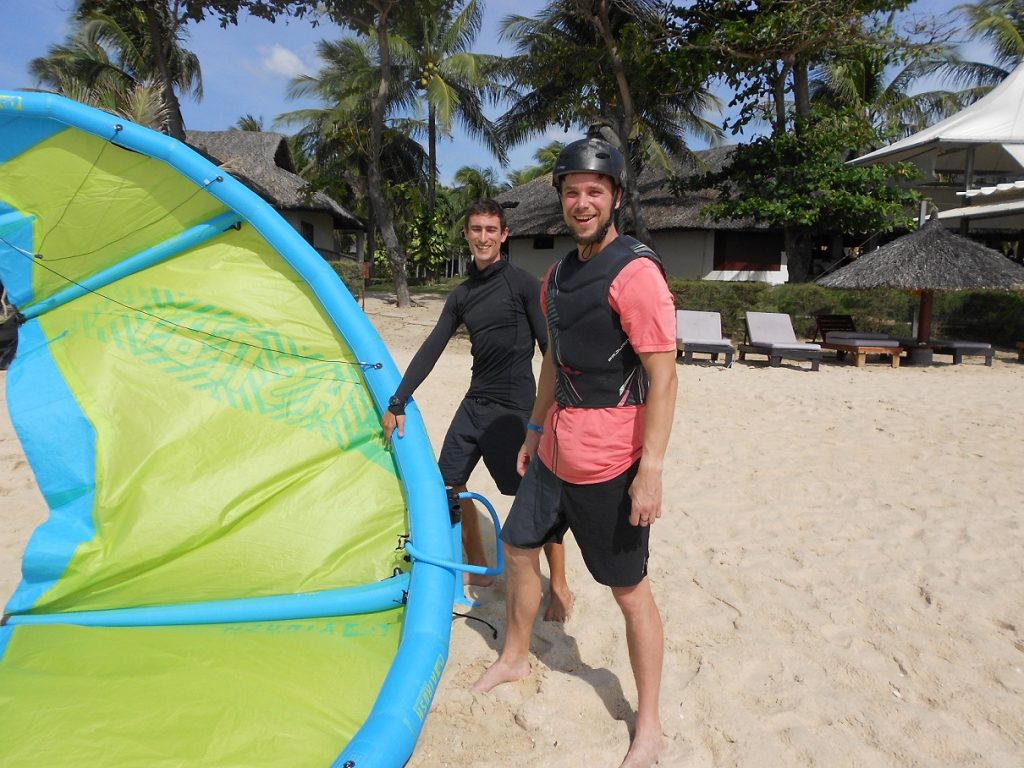The Alphabet Soup of Instructor Certification
How can I tell a good school or instructor?
As a beginning kitesurfer, a lot depends on your choice of kite school… and there is a lot of information to sort through to make this decision. Pricing policies, equipment, wind and water conditions during the lessons, and of course especially the quality of instruction all come into play. A number of competing organizations offer instructor licenses. VDWS, BPJEPS, PASA, IKO, BKSA, KA… Some are better than others, “instructor certification” is often used as a selling point, and schools are sometimes under pressure to hire only instructors holding a particular teaching certificate. Some of these organizations are actually proper governing bodies, either government-related or nonprofit national sports associations. And some are private companies with their motive being profit from generating instructor and student certifications and other sources.
Keep in mind that just because someone holds an instructor card, that does not mean that they are a good instructor. There are very skilled instructors out there who don’t have a teaching certificate, or who have chosen to let theirs expire. There are also plenty of poor and mediocre instructors in possession of a teaching cert. In fact, it’s not that hard to get a teaching license—in some cases it takes just a few days’ course. Some organizations take much more time than others to monitor their instructor’s teaching performance before issuing a license.
I’m going to offer some observations based on my experience from 18 years in the industry, which includes teaching, hiring, training, and observing many instructors in action.
When choosing a school or instructor, it’s a good idea to shop around and ask some questions either online or in person before booking. But observing a lesson in progress is really the best way to tell– if you know what to look for. Here are a few particular points you can take note of:

1) Before booking any lessons, does the school confirm that you are a good swimmer, and ask specific questions about any health or medical factors that may affect you during your lesson? These would include blood sugar issues, heart conditions, old injuries, etc. If you are booked in for a lesson without being asked this, it is a major red flag, and an indication of how much attention is paid to other important safety details as well.
2) Many schools offer packages containing a number of hours. Are you “locked in” by being required to pay for the entire package first, or can you decide as you go whether to continue with that school? It’s very tempting for a school to collect the money first, then run out the hours in marginal conditions in order to finish a package. Check policies for refunds and no-wind situations.
3) Look at the training materials and handouts available to the students. Is there a methodical lesson plan laid out with goals and skills to learn along the way, with safety standards clearly specified?
4) You should be made to feel welcome to observe any lessons in progress. Watch how the instructor interacts with their students, and listen to how well they explain technical points. You can also look for these specific things:
>Students are wearing safety gear
>Watch several times as a student’s kite is launched into the air—this is a crucial point in time and should not be rushed. Just before the kite is launched, do you see the instructor/ student make a careful back-line tension check, as well as a 360 degree scan of the area around them, every time?
>This is probably one of the best clues, as we see many instructors getting sloppy with this during lessons: Watch to make sure that care is being taken to avoid flying kites upwind or above people on the beach or in the water. One of the first and most basic safety principles of kiting is to keep the downwind area (within your kite lines’ radius) as clear as possible. This is because the kite or lines can do significant damage if they strike a person. It’s bad practice for either a student or an instructor to fly a kite with long lines any more than necessary where there are people downwind; this includes walking up the beach with the kite in the air.
5) It’s a good indication to a look at the school’s beach and launching/landing area. Does it look organized and clear, or are there kites and lines and people cluttering up the place? Are people launching and landing their kites too close to others? Are they standing around or walking through the area with their kite in the air? In a well-managed launch zone, kites are launched and caught close to the water’s edge, and are only in the air for the time it takes to move to and from the water.
In my experience and observations, the two highest level instructor certifications come from BPJEPS (France) and VDWS (Germany). But keep in mind that no one particular organisation’s methods should be considered the standard for all others to follow in every situation. Each student, instructor, and location are unique and a good instructor continuously takes all these into account during a lesson. Ultimately, each school’s management tends to have more of an influence over the instructors’ methods and practices than whatever certification they happen to hold.
